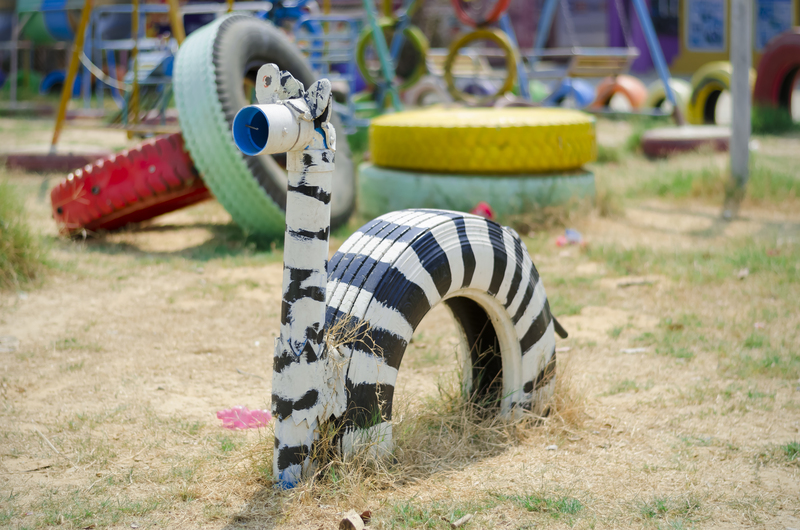Personalized Clutter Removal Plans for Lasting Results
Clutter can silently take over our homes, offices, and even our minds, impacting our productivity, mood, and overall well-being. While quick fixes and generic cleaning hacks may provide temporary relief, they often fail to deliver lasting decluttering results. The secret lies in crafting personalized clutter removal plans tailored to each individual's needs, habits, and lifestyle. In this comprehensive guide, we'll explore how bespoke approaches to decluttering can transform your environment and ensure sustainable organization.

Why Generic Decluttering Fails
Many people have tried to tidy up by following broad advice from books, TV shows, or viral trends. While these can be inspiring, they lack a focus on personal habits and day-to-day routines. Generic decluttering often leads to rebound clutter because it doesn't address the root causes or create systems that work for your unique situation.
- One-size-fits-all approaches ignore your personal triggers and preferences.
- Generic advice often overlooks physical, mental, and emotional factors.
- Temporary solutions rarely withstand life's inevitable changes.
For long-term clutter control, a custom-tailored plan is essential. Let's delve into the components of a personalized decluttering strategy designed for enduring success.
Understanding Your Relationship with Clutter
Identifying Your Clutter Sources
Every person accumulates clutter for different reasons. Start by analyzing the sources of clutter in your space:
- Emotional attachments: Sentimental items or gifts.
- Habitual accumulation: Impulse buying or overstocking.
- Lifestyle changes: Shifting routines, moving, or evolving interests.
- Lack of organization: No systems for incoming items.
Reflecting on these helps you pinpoint the problem areas and create a roadmap for your individualized clutter removal approach.
Assessing Your Space and Priorities
Each room serves a distinct function. Your decluttering plan should prioritize zones based on their importance and how they're used:
- High-traffic areas: Entryways, kitchens, family rooms often gather clutter quickly.
- Productivity spaces: Home offices and workspaces need clarity for focus.
- Storage zones: Closets, basements, and garages might require special organization.
Spend time observing traffic patterns, daily routines, and item usage to fine-tune your priorities.
Elements of a Personalized Clutter Removal Plan
Designing a customized clutter clearing plan involves several key steps. Addressing each of these ensures that your strategy fits you and leads to lasting organizational improvements.
1. Declutter with Purpose
Before you start, define your objective. Do you want a calmer bedroom, a more efficient kitchen, or simply to reclaim office space? Your purpose will drive decision-making and motivation. Write it down, post it somewhere visible, and revisit it if you lose focus.
2. Set Realistic Goals and Timelines
Unrealistic expectations can lead to frustration and burnout. Instead, break your project into manageable tasks. For example:
- Declutter one drawer per day instead of the entire kitchen at once.
- Set a timer for 15-30 minute sessions.
- Celebrate small wins - progress builds momentum!
3. Personalize Decluttering Methods
Choose methods that naturally fit your style. A few popular options include:
- KonMari Method: Keep only what 'sparks joy.' Ideal for sentimental declutterers.
- Four Box Technique: Label boxes: Keep, Donate, Sell, Trash. Useful for decisive organizers.
- Minimalist Game: Remove one item on Day 1, two on Day 2, and so on.
Mix and match these methods or adapt them. The best decluttering strategies are ones you'll actually stick with.
4. Respect Emotional Attachments
We all own items with sentimental value. To avoid regret, integrate emotional decluttering into your personalized plan:
- Set aside time to review keepsakes thoughtfully.
- Take photos of cherished items before letting go.
- Establish a 'memory box' for truly precious belongings.
Acknowledging emotions will prevent rebound clutter and make the process more rewarding.
5. Address Clutter Hotspots
Focus on the areas that clutter accumulates most. For example:
- The 'drop zone' near your entrance.
- Countertops and dining tables.
- Mail piles or digital desktops.
Create specific solutions, like a mail sorting station or clear a shelf for everyday essentials. Localized solutions are key to a customized approach.
6. Involve All Stakeholders
If you share your space with others, your plan should reflect everyone involved. Hold a family meeting or discuss with housemates to establish shared rules for incoming items, donation schedules, or communal storage.
7. Create Sustainable Organization Systems
Once you've decluttered, maintenance is essential. Establish systems that suit your unique rhythms:
- Install hooks for easy access to everyday coats and bags.
- Use baskets or bins for frequently used groups of items.
- Implement digital reminders for regular tidying up.
When organization systems are intuitive and personalized, they are much easier to maintain.
Custom Tools and Resources for Your Plan
Tailored clutter removal isn't about buying expensive storage gear. It's about choosing tools that match your needs. Here are suggestions:
- Checklists: Personalized lists keep you on track and accountable.
- Label makers: Efficient for shared spaces and quick retrieval.
- Donation bags or bins: Keep them in an accessible spot to encourage routine purges.
- Apps and digital organizers: For digital clutter or reminders.
- Journaling: Track emotional wins and your evolving relationship with possessions.
Overcoming Common Clutter Challenges
Even the best personalized clutter removal plan faces obstacles. Here's how to handle common issues:
Procrastination and Overwhelm
- Set a timer for short intervals. Start with 5-10 minutes if needed.
- Tackle the easiest area first to build confidence.
- Reward yourself after each session.
Sentimental Struggles
- Invite a supportive friend to help make tough decisions.
- Sort sentimental items last to build decluttering muscle.
- Repurpose or creatively display beloved items.
Relapse and Maintenance
- Establish a regular decluttering check-in: monthly or quarterly.
- Adopt a "one in, one out" policy for purchases.
- Practice mindful acquisition--question necessity before buying.
The Role of Professional Help
Sometimes, a certified professional organizer or decluttering coach can provide valuable insights for bespoke clutter challenges. These experts offer:
- Objective assessment of problem areas.
- Accountability and customized strategies.
- Guidance through emotional hurdles.
- Resources for donation or proper disposal.
Don't hesitate to seek help if persistent problems prevent you from achieving lasting results.
Digital Decluttering - The Modern Necessity
Physical decluttering is only one side of the coin. In today's connected world, digital clutter - emails, files, photos - can be just as overwhelming. Your custom clutter clearing plan should extend to your virtual space:
- Unsubscribe from newsletters you no longer read.
- Organize files with labeled folders and cloud storage.
- Back up essential data and delete duplicates or outdated items.
Regular digital maintenance boosts mental clarity and prevents information overload.
Measuring Success - How Do You Know It's Working?
A personalized clutter removal plan should yield tangible results. Here's how you can assess progress:
- Ease of finding items - less time looking, more time living.
- Reduced stress and anxiety related to your space.
- Consistent maintenance becomes routine, not a chore.
- More room for meaningful activities and new memories.
Remember, progress is personal and not always measured in Instagram-worthy before-and-afters. Your goal is a functional, peaceful environment that suits your lifestyle.

Building a Clutter-Free Mindset for Lasting Results
Ultimately, the path to permanent decluttering is as much about mindset as it is about physical organization. Build these habits for enduring clutter control:
- Practice gratitude for what you have, reducing the urge to over-accumulate.
- Value experiences over possessions.
- Educate household members about your systems and why they matter.
- Embrace flexibility--adjust plans as your life evolves.
With these practices, your clutter removal solutions will evolve with you, ensuring that organization is not a one-time event but an ongoing way of life.
Conclusion: Start Your Custom Clutter-Free Journey Today
Clutter-free living doesn't happen overnight--it's a journey of self-discovery and practical action. By investing in personalized clutter removal plans for lasting results, you empower yourself to create spaces that reflect your aspirations and values. Tailor your approach to who you are, invite others into your journey, and enjoy the confidence that comes from true order.
Are you ready to design your own bespoke clutter clearing plan? Start by assessing your needs, set goals, and embrace a system that fits your unique lifestyle. Remember: lasting results begin with a plan made just for you.